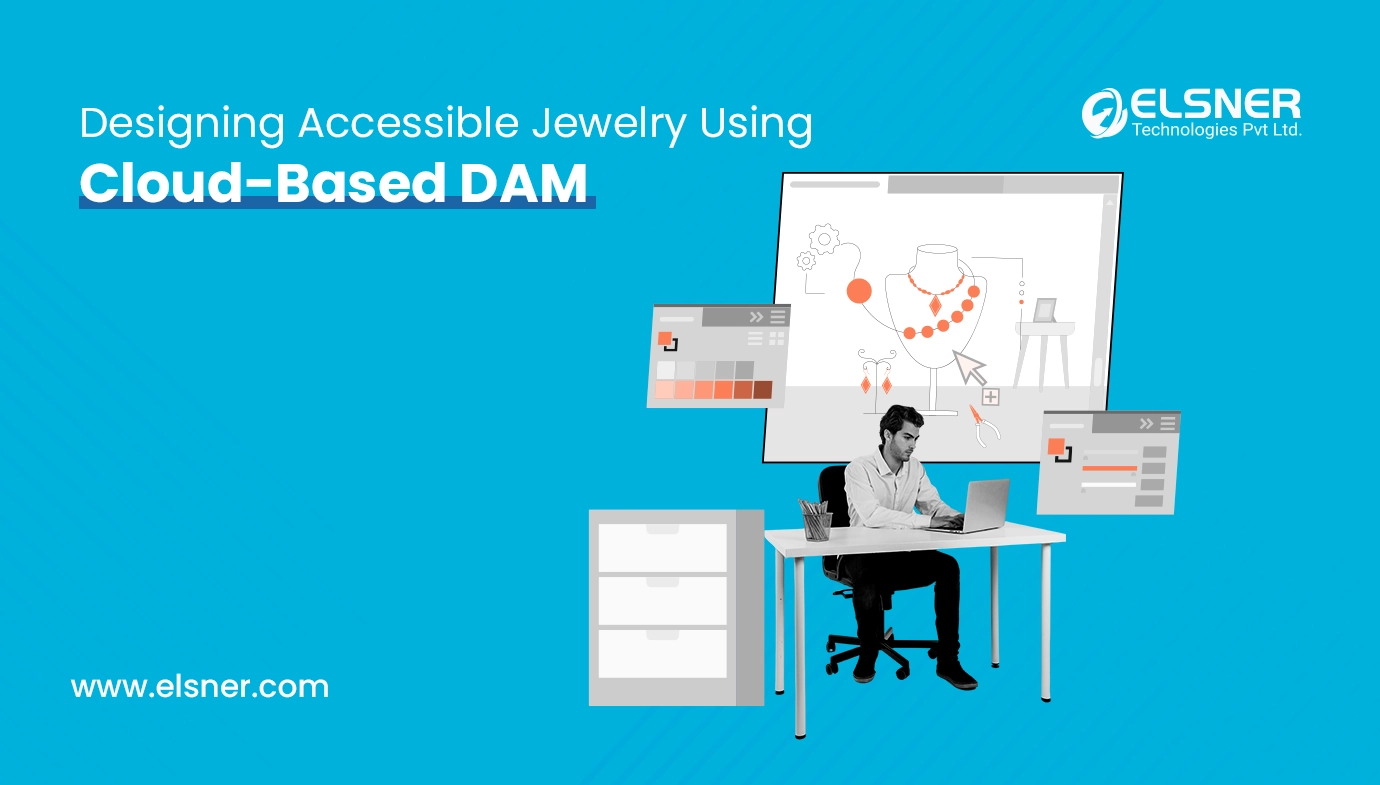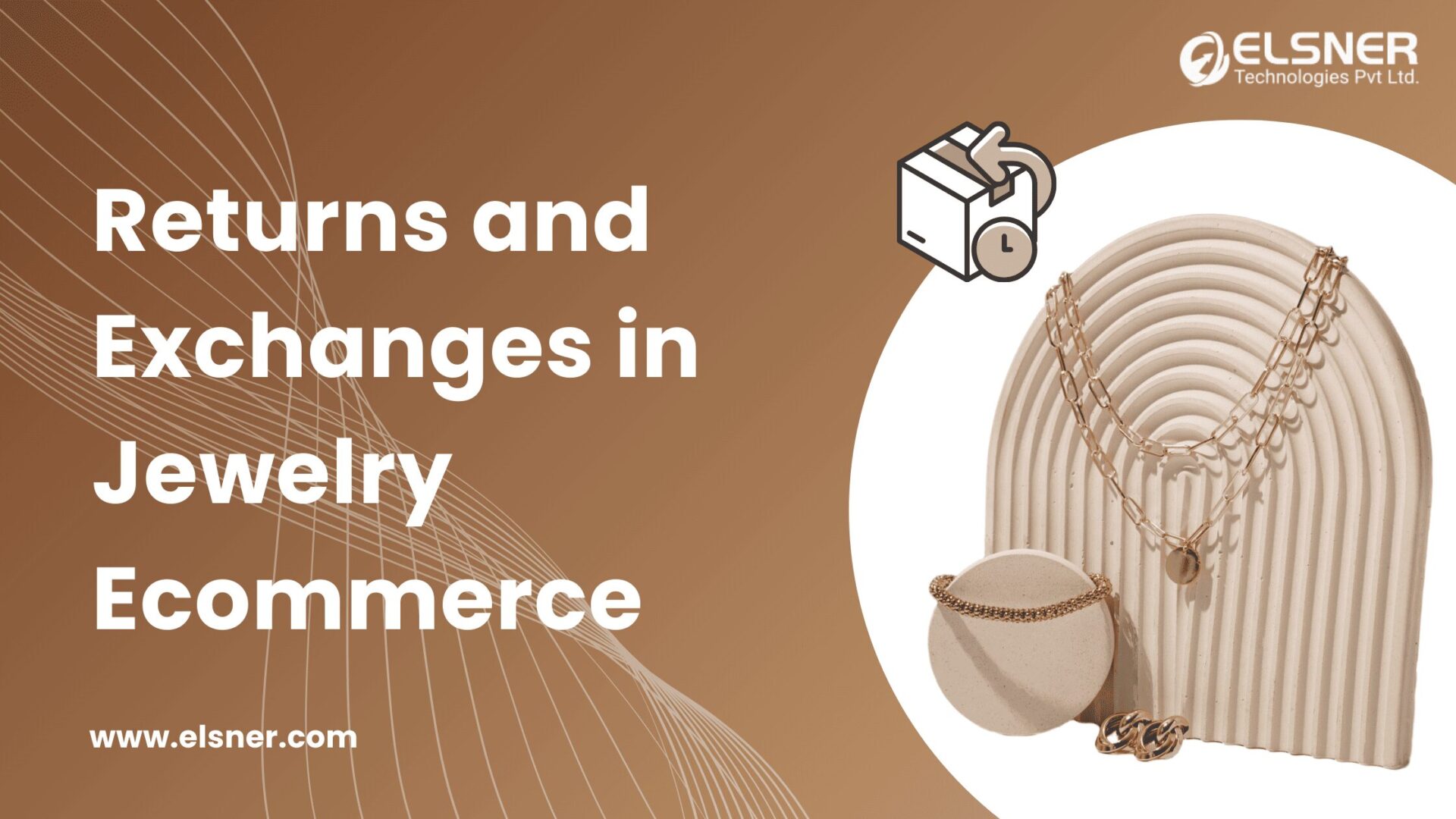- What is Accessibility in Jewelry Design?
- What are the Key Aspects of Accessible Jewelry Design?
- What Role Does Cloud-Based DAM Play in Accessible Jewelry Design?
- Centralized Asset Repository
- Accessibility Metadata Tagging
- Asset Tracking and Version Control
- Accessibility Compliance Monitoring
- Collaborative Workflows
- Bridging Accessibility and Creativity: Case Study
- What are the Key Steps Involved in Designing Accessible Jewelry Employing a Cloud-based DAM?
- Step 1# Defining of Accessibility Criteria
- Step 2# Collecting Design Assets
- Step 3#: Collaborating Employing the Cloud-Based DAM
- Step 4# Incorporating Accessibility Features
- Step 5# Conducting Testing and Iterate
- Step 6# Ensuring Compliance and Documentation
- Step 7# Launching and Monitoring
- Implementing a Cloud-based DAM System for Jewelry Design Assets Management: Code
- Final Thoughts
With the continuous evolution of the jewelry industry, accessibility and inclusivity are turning out to be central themes in design and production. As brands and designers strive to cater to diverse groups of audiences, the concept of accessible jewelry is gaining a lot of traction. One of the robust tools that is known for driving this movement is Cloud-based DAM or Digital Asset Management systems.
In this detailed blog post, we will understand the role of cloud-based DAM in accessible jewelry design and the key steps involved. So, all that you need to read about this from start to end before you opt for the assistance of a professional jewelry Ecommerce development company. Let’s dig in:
What is Accessibility in Jewelry Design?
Accessibility in jewelry design typically entails a wide range of ideas aimed at ensuring that individuals of all abilities can establish engagement with and also enjoy adornments. Conventionally, traditional norms and values often restrict jewelry design, and segments of the population are inadvertently excluded.
However, the model is moving towards an inclusive approach that celebrates diversity in design aesthetics along with functionality. To learn more, you can get in touch with a leading jewelry website design company.
What are the Key Aspects of Accessible Jewelry Design?
Now, it is time to learn about the major aspects of accessible jewelry design, which we will discuss in the following section. So, let’s find out before reaching out to a trusted jewelry Ecommerce website designagency.
- Visual Accessibility: The designing of jewelry pieces should be done in a manner so that it is eye-striking and can be easily perceptible to individuals with varying degrees of visual impairment. Using contrasting colors, tactile effects along with clear texture help in boosting visibility and recognition.
- Physical Accessibility: Jewelry pieces should be designed with considering the ease of wear and removal in mind. It applies especially to those individuals with mobility impairments. Ensuring closures, clasps and fastenings are ergonomic and user-friendly are also important.
- Inclusive Representation: Designers hired from a leading jewelry website design company should acknowledge diverse cultural influences and incorporate elements that are relevant to different communities. Representation is important, and jewelry can be a powerful way to express culture and affirm identity.
- Material Selection: Jewelry items should be selected with sensitivity to allergy, skin sensitivity and comfort needs. Adjustable sizing options and hypoallergenic materials are known for catering to diverse skin types and body types.
What Role Does Cloud-Based DAM Play in Accessible Jewelry Design?
Cloud-based Digital Asset Management (DAM) systems are known for providing a solid platform for streamlining design and production procedures. Not only that, but it also helps facilitate collaboration and ensure compliance with access regulations. Knowing this is extremely important before you choose jewelry Ecommerce development services. Below, we have discussed how DAM helps in the creation of accessible jewelry:
Centralized Asset Repository
A cloud-based DAM is a centralized repository for storing, organizing, and managing digital assets, which entails design sketches, images, CAD files, and marketing materials. This centralized approach helps to make sure that all team members get access to the most updated assets, promotes collaboration and coherence in design endeavors
Accessibility Metadata Tagging
Using metadata tagging capabilities allows designers to categorize assets on the basis of accessibility attributes. It includes materials, size, design features, etc. This metadata facilitates fast and efficient retrieval of assets that are customized for accessibility needs. Thus, it helps designers come up with inclusive jewelry designs with incredible ease.
Asset Tracking and Version Control
DAM systems are known for facilitating asset tracking and version control. It helps in making sure that the collaborators and designers from a leading jewelry website design company are working with the most recent files. As a result, it helps in effectively eliminating the risk of errors which results from outdated or conflicting assets. Thus, it improves both the efficiency and preciseness in the design procedure.
Accessibility Compliance Monitoring
DAM systems facilitate the integration of accessibility compliance tools and plugins for evaluating design assets in order to ensure compliance with accessibility standards and guidelines. This proactive approach ensures that jewelry designs meet regulatory requirements and user needs. Thus, it promotes inclusivity and market reach. To learn further, you should make sure to get in touch with a reputed jewelry Ecommerce development agency.
Collaborative Workflows
Cloud-based DAM platforms promote smooth collaboration between designers, suppliers, stakeholders, artisans and those involved in jewelry design. So, in this case, teams can effectively collaborate irrespective of geographic location through shared workspaces, version tracking and real-time commenting. All of these fosters innovation and creativity.
Bridging Accessibility and Creativity: Case Study
In this section, we are going to take into consideration a hypothetical case study for illustration of the revolutionary effect of cloud-based DAM on accessible jewelry design. So, let’s dig in:
- Scenario: A jewelry design studio that specializes in accessible and inclusive jewelry looks forward to launching a new collection that is inspired by sensory exploration and tactile experiences.
- Implementation: In this case, the design team focuses on employing a cloud-based DAM platform for collaborating on the development of concept, material choice and prototyping. Metadata tagging is also implemented for categorization of design assets on the basis of sensory attributes. Thus, it helps in making sure that every piece well resonates with a diverse audience group and effectively engages multiple senses.
- Outcome: By employing a cloud-based DAM, it is possible for the design studio to successfully come up with a collection of tactile jewelry pieces that encourages inclusivity and delights the senses. Through strategic marketing and outreach endeavors, the collection garners acclaim for its unique approach to accessible design. Thus, it helps in attracting a diverse clientele and effectively fosters community engagement.
If you need any assistance related to jewelry Ecommerce theme design or development, you can opt for the help of a reliable jewelry Ecommerce development company.
What are the Key Steps Involved in Designing Accessible Jewelry Employing a Cloud-based DAM?
There are a number of steps involved in designing accessible jewelry by using a cloud-based DAM or Digital Asset Management system. Below, we will focus on discussing these major steps in detail:
Step 1# Defining of Accessibility Criteria
The first and most important step that you need to follow before designing accessible jewelry is to get a good know-how of the diverse requirements of prospective users. In this regard, it becomes crucial for you to take into consideration different factors. Some of these include cultural preferences, sensory sensitivities, visual impairments, and physical disabilities. So, defining accessibility criteria effectively guides the design procedure.
Step 2# Collecting Design Assets
The subsequent step involves amassing digital assets which includes reference images, material samples, CAD files and sketches. Now, as defined in the step 1, it becomes important to organize these assets according to the accessibility criteria. After that, you need to tag each of the assets with pertinent metadata which entails accessibility attributes like material, size, tactile features and color contrast.
Step 3#: Collaborating Employing the Cloud-Based DAM
In order to promote collaboration among artisans, designers, stakeholders, and suppliers, you need to make use of a cloud-based DAM platform. As a part of this step, you should upload design assets to the DAM system, which facilitates the creation of a centralized repository that can be accessed by every team member. In this regard, it becomes important for you to leverage features like commenting, version control, and real-time editing to streamline the design procedure. It also ensures alignment with accessibility objectives.
Step 4# Incorporating Accessibility Features
The next step involves the integration of accessibility considerations into the design procedure. In this regard, all that you need is to experiment with textures, materials, and forms that effectively improve usability and appeal to a diverse audience. Also, taking into consideration various features like easy-to-use closures, adjustable sizing, culturally inclusive designs, and hypoallergenic materials is the key. Finally, you need to employ the DAM systems to iterate on designs, collect feedback, and refine prototypes.
Step 5# Conducting Testing and Iterate
As a part of this step, you should focus on carrying out comprehensive usability testing with individuals who represent different abilities and demographics. You should collect feedback on the functionality and accessibility of the jewelry designs. Also, you can make use of the insights gained from the testing process to iterate on the designs. You should again make the necessary adjustments to it. To reflect the latest iterations, you should consider updating the design assets in the DAM systems.
Step 6# Ensuring Compliance and Documentation
This step is all about verifying the ultimate jewelry designs to ensure that it complies with pertinent accessibility standards and regulations. Also, you should focus on documenting the accessibility features that are included into each design which entails the materials used, sizing alternatives and ergonomic considerations. For future reference and audit purposes, all that you need is to effectively maintain comprehensive reports within the DAM system.
Step 7# Launching and Monitoring
In this step, you should take into consideration sales, marketing, and distribution strategies in order to prepare for the launch of the accessible jewelry collection. To evaluate the effect of accessibility on the success of the collection, it becomes important for you to monitor sales performance along with customer feedback. You can make use of insights from sales data and customer interactions to inform future design iterationsand product development endeavors. Thus, by successfully adhering to the above-discussed steps, one can come up with accessible jewelry that fosters inclusivity, celebrates diversity and caters to the requirements of diverse users.
Implementing a Cloud-based DAM System for Jewelry Design Assets Management: Code
class JewelryAsset:
def __init__(self, name, type, size, material, accessibility_tags):
self.name = name
self.type = type
self.material = material
self.accessibility_tags = accessibility_tags
class CloudDAM:
def __init__(self):
self.assets = []
def upload_asset(self, asset):
self.assets.append(asset)
def search_assets(self, query):
results = []
for asset in self.assets:
if query.lower() in asset.name.lower() or query.lower() in asset.accessibility_tags:
results.append(asset)
return results
# Sample usage:
if __name__ == “__main__”:
# Create some jewelry assets
asset1 = JewelryAsset(“Elegant Necklace”, “Necklace”, “Medium”, “Silver”, [“visual”, “hypoallergenic”])
asset2 = JewelryAsset(“Bracelet with Charms”, “Bracelet”, “Adjustable”, “Gold”, [“physical”, “visual”])
# Initialize the cloud-based DAM system
dam_system = CloudDAM()
# Upload assets to the DAM system
dam_system.upload_asset(asset1)
dam_system.upload_asset(asset2)
# Search for assets based on query
search_query = “necklace”
search_results = dam_system.search_assets(search_query)
# Display search results
print(f”Search results for ‘{search_query}’:”)
for result in search_results:
print(f”Name: {result.name}, Type: {result.type}, Material: {result.material}, Size: {result.size}”)
“`
▲
One of the integral things to note about this code is that it defines two classes, ‘CloudDAM’ for managing jewelry assets in a cloud-based system and ‘JewelryAsset’ for representation of individual jewelry assets. It entails methods for searching assets and uploading assets on the basis of a query. It demonstrates the best ways to create jewelry assets, uploading those to the DAM system and searching for assets by accessibility tags or names.
Final Thoughts
In jewelry design, accessibility has turned out to be a fundamental principle that facilitates driving inclusivity and innovation. By leveraging the capabilities of cloud-based DAM systems, jewelry designers can celebrate diversity, break down barriers, and a lot more. You can reach out to a reputed jewelry Ecommerce development company today to make the most out of it.

About Author
Harshal Shah - Founder & CEO of Elsner Technologies
Harshal is an accomplished leader with a vision for shaping the future of technology. His passion for innovation and commitment to delivering cutting-edge solutions has driven him to spearhead successful ventures. With a strong focus on growth and customer-centric strategies, Harshal continues to inspire and lead teams to achieve remarkable results.




